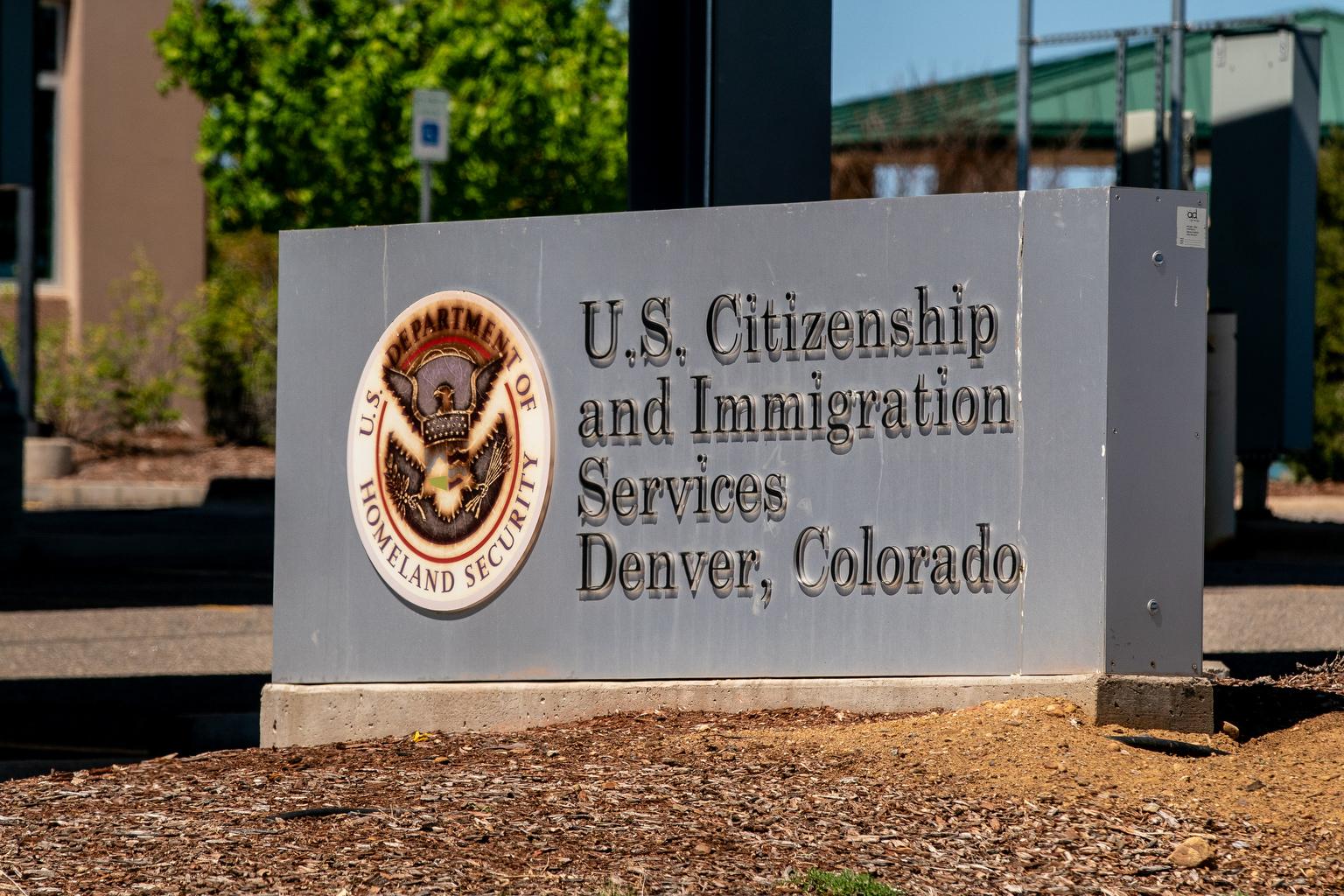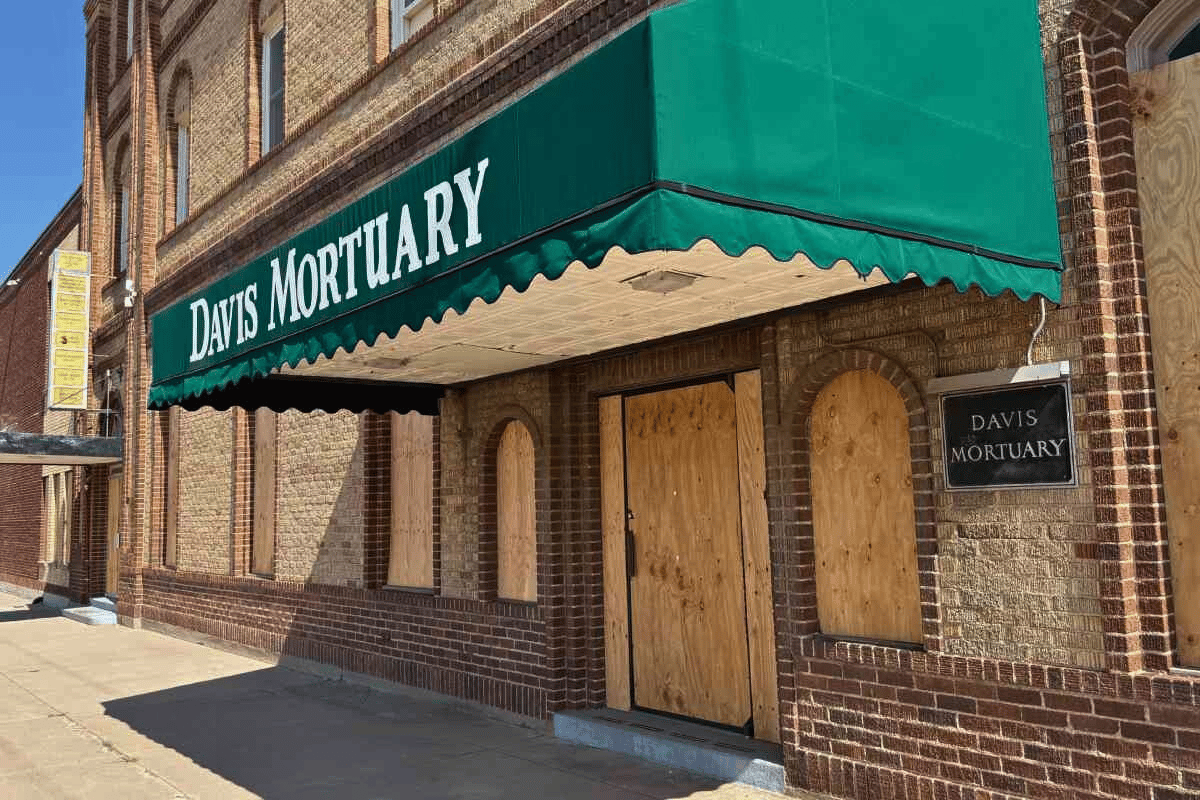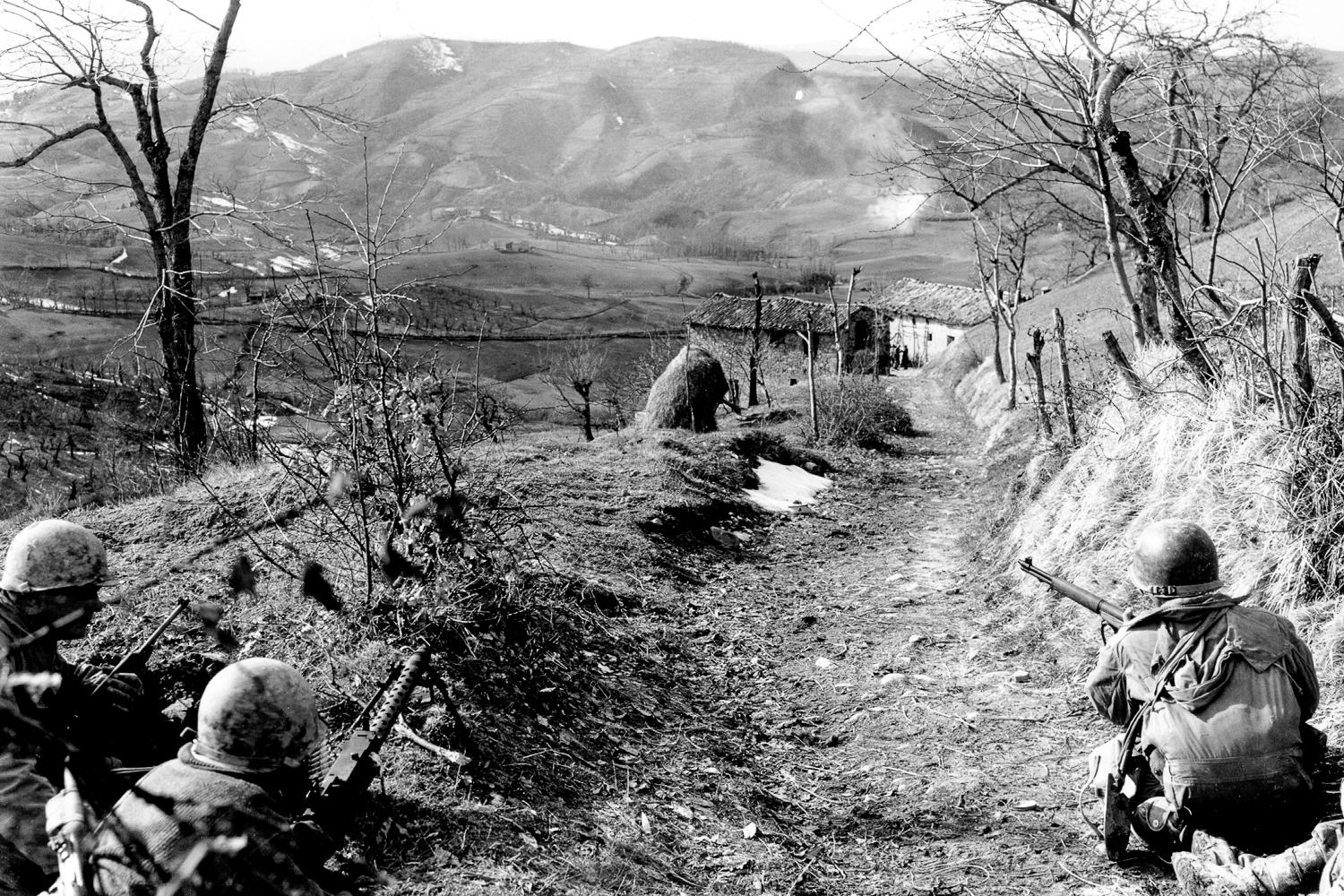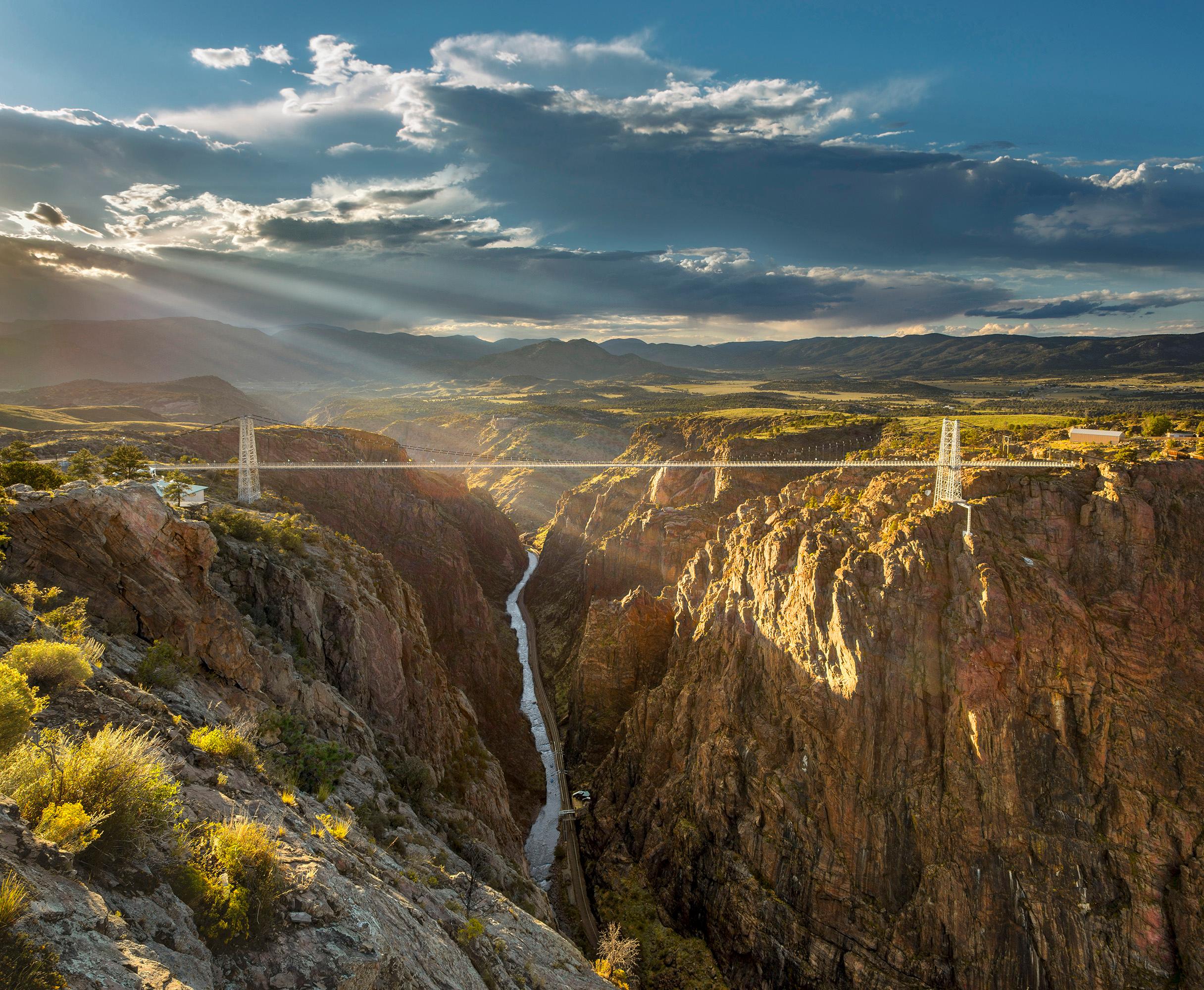
For nearly a century a bridge has spanned the Royal Gorge nearly 1,000 feet above the Arkansas River near Cañon City. The steep rock walls of the canyon make for a dramatic, if dizzying view from the span. Even now, it is the highest suspension bridge in the nation and one of the highest in the world.
Listeners asked about the construction and history of the bridge as part of Colorado Wonders. So KRCC’s Shanna Lewis spoke with photographer and author Eve Nagode of Cañon City. She’s writing a book about the bridge and its history.
This interview has been edited for length and clarity.

What's it like to stand at the edge of the Royal Gorge?
What is amazing is looking down into the gorge – because it is a long way down. Wanting to be able to see that view is what drove building the bridge in the first place. Starting in the 1870s people would come by horseback or buggy. They'd get to the edge of the gorge and it was so rocky and dangerous to climb to the very edge, some people described crawling to the edge and peering down. So ever since the 1870s, there's been a desire to have a bridge in order to safely walk out and enjoy the view in both directions.
The idea of building Colorado’s Brooklyn Bridge
The very first proposal for a bridge occurred around 1900. A man was walking up the railroad tracks that run at the bottom of the gorge. He'd been hearing all about the building of the Brooklyn Bridge, and he thought if they built the Brooklyn Bridge on top of this (canyon), it would be the highest bridge in the world. So he went back into Cañon City and did a sketch, and they put it up in the window of his cousin's grocery store for all to see. The sketch was duplicated on a postcard that they started to sell in the early 1900s.
A bridge of glass over the canyon
The next idea was (from) a man who wanted to build an electric railway from Cañon City to the gorge just for sightseeing purposes, and his plan was to build a bridge of glass where the platform would be a 1.5-i inch thick glass on top of a girder. Imagine that! He wanted people then to get off his electric railway just before they got to the bridge, walk across the glass bridge, and then the railway would then pick them up and take them back into town. The railway never happened.
The footbridge that never happened
The next time was in the early 1920s when a man who wanted to run a concession on top of the Royal Gorge made a proposal that he would build a footbridge across the gorge if they would just give him a contract for 15 years to have a concession up there, and he had a deadline and he didn't make it.
Bridge construction began in 1929

Lon Piper out of San Antonio, Texas came to Cañon City, looked at the gorge, and said, “I can build a bridge across that. Not only a bridge but an automobile bridge that will be wide enough for two lanes of traffic.”
The reason he was so confident is he was just completing four bridges across the Rio Grande between Texas and Mexico, and his engineer was an absolute expert at building bridges. So he got the contract to build the bridge. Construction started in June of 1929, and the grand opening was December 8th of the same year.
What it was like to work on the construction crews for the bridge
The engineer was all about safety. The workers were required to wear special shoes that were like suction cups, and they were told to always shuffle their feet and never look down. They managed to get that whole bridge built without any major issues.
Original building costs
The original proposal was $250,000 to build the bridge. But after they got there and started working on the bridge, they realized there was this perfect crevice right next to it that could support an incline railway going down it. So the final cost was $350,000 because they spent another $100,000 building the incline railway.
Based on inflation alone it would probably cost about $6.5 million (today). However, after the Royal Gorge fire in 2013, the estimates just for replacing and updating the incline to today's codes and safety practices would cost at least that much to build a new incline.
The effects of the 1929 stock market crash, the Great Depression and World War II
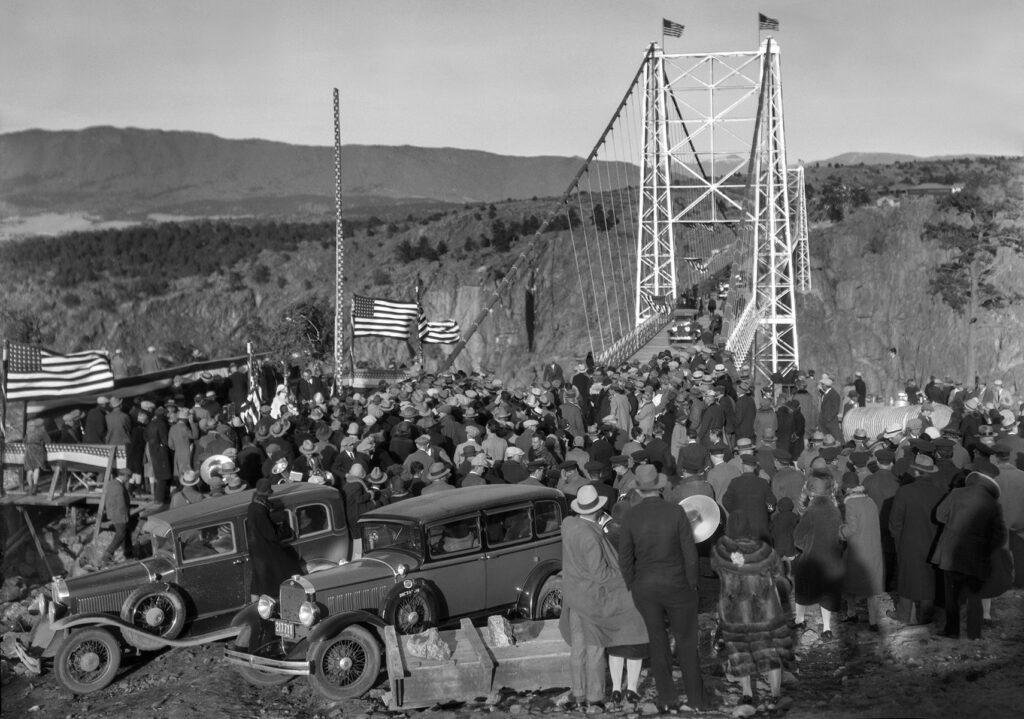
Piper did everything right. He built the world's highest bridge and the world's steepest incline. So he was all set in 1929 to have a pretty amazing tourist attraction. Then in October, as they were finishing up the bridge, they had the stock market crash.
By the early 1930s, the people who were still working there on the incline were very grateful to have a job because already people were losing their jobs. Throughout the Depression, people did come to visit the park, but not nearly the numbers that had been calculated to really pay for the bridge.
At the end of the 30s, as things got better, Piper thought, “Okay, now we finally get a break.”
Then World War II happened and Uncle Sam said, “Be patriotic and stay home for vacation. Don't travel.” And the railroads said, “Be patriotic and don't ride on the railroads because we need them to transport troops across the country.”
So again, another long period in which very few people came to see the park.
By the end of the 1940s, Piper was done. He wanted out. So he talked to a wealthy Texan named Clint Murchison who showed an interest in the park because he had read that after the war, people were going to be having more leisure time, and he thought investing in a leisure property would be a good idea. So the Murchison family took over and they have successfully run the franchise ever since.

The Royal Gorge Park Bridge and Park is a franchise operation. The Royal Gorge property was given to Cañon City by Congress in 1906 with a bill that was signed by Teddy Roosevelt. So when we talk about the bridge, the park and the amusements we are talking about the franchise (that allows the attractions to operate on the land owned by Cañon City).
In 2013 a wildfire burned thousands of acres
The bridge was about the only thing that survived the fire because it's made of steel. But the wooden boards on the south side ended up burning because there were trees and brush underneath the bridge that caught them on fire. The rest of the park was not that lucky. Most of the buildings and attractions were burned to the ground. Fortunately, everyone in the park was successfully evacuated safely.
Because the bridge survived, they were determined to rebuild even before the last flames were put out. The park owners and the city of Cañon City collaborated on a new park. It was actually very timely because so many of the buildings had been built back in the 1930s, 40s and 50s. The whole park was aging and now they had a clean slate.
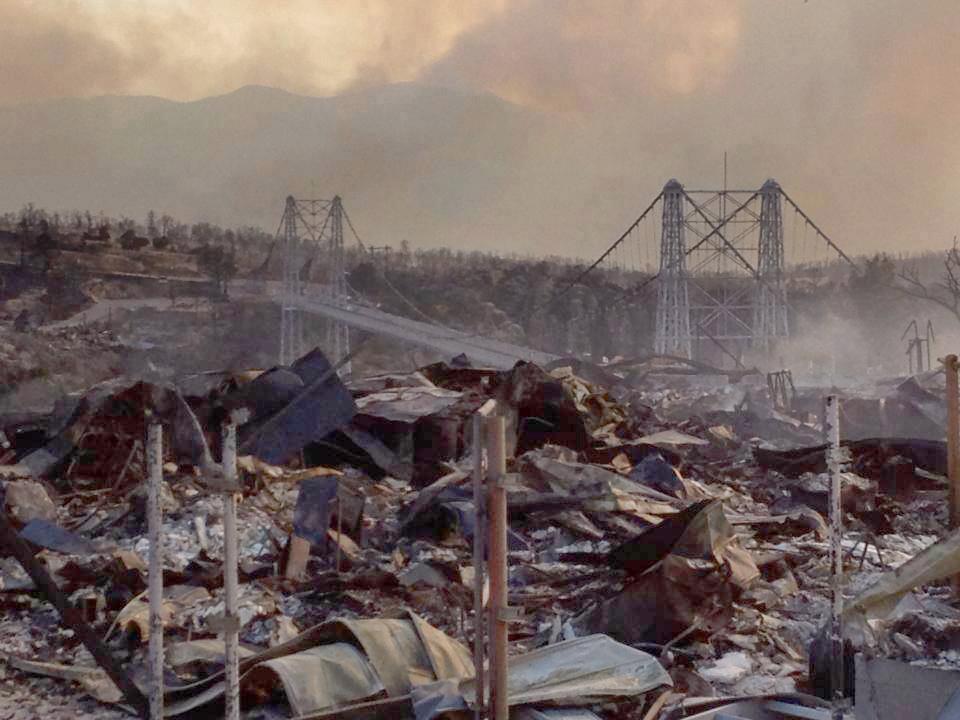
The first thing they completed was the new visitor center on the north side. The sides of the exterior of the visitor center are covered with planks that came from the fire on the bridge, so you could still see the burned planks when you come to the park.
Can cars still drive over the bridge?
The only cars that drive over it right now are park vehicles driving into the park and across the bridge and even out the south gate was stopped after the fire. And the only exception to that was during COVID when the park was completely closed to pedestrians. So they allowed people to pay to come in and drive across the bridge and back. However, if you belong to a car club or a motorcycle club, you can make arrangements to drive across the bridge before the park officially opens and then drive back and get your picture taken that way.
They used to have a south entrance and maintaining the road and the south entrance was just very costly. So now the only way to get in is to drive in, drive back, and hence that is why it's called the bridge to nowhere
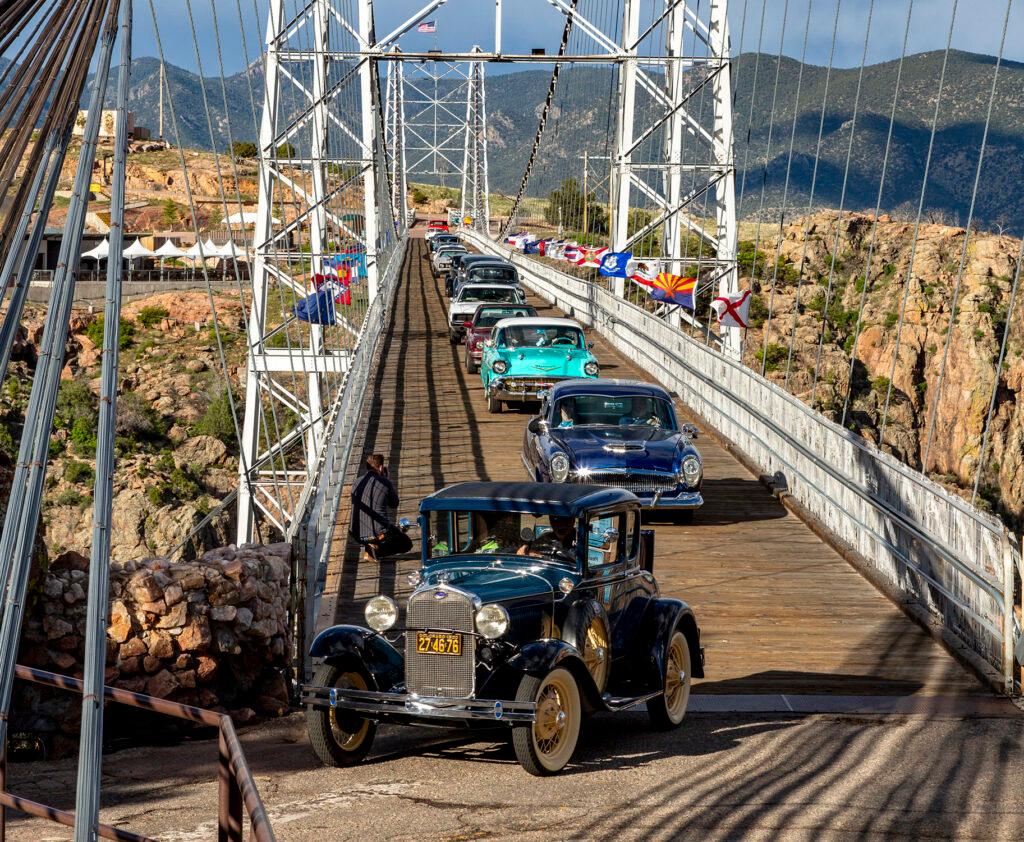
Highest bridge records
For 72 years, it was the highest bridge in the world, and then in the early 2000s China started a major bridge-building program, and their first bridge was 19 feet higher than the Royal Gorge Bridge. Since then, they have built many more bridges and bridges in other countries have been built on much more mountainous terrain.
The Royal Gorge Bridge is now 60th in the highest bridge in the world category, but it's still the highest suspension bridge in the United States.
The famous bridge isn't the only interesting bit of engineering and things to do at Royal Gorge — there’s a hanging railroad bridge
When you stand on the suspension bridge above, if you look straight down, you'll see the hanging bridge below at the bottom of the gorge at its narrowest part. The railroad company was unable to put tracks on a flat surface. There was literally no room (on the steep canyon walls). They had a very skilled engineer design an iron-hanging bridge along the side of the canyon. In photographs, you can see that there's just air underneath that bridge running along the side of the gorge. It's still in use today by the Royal Gorge Scenic Railway.
The thrill of riding the Royal Gorge Incline
The incline was close to a 45-degree angle and the passengers stood on stepped risers in the car and they were facing straight ahead. No matter where you were in a car, you could see over the people in front of you.
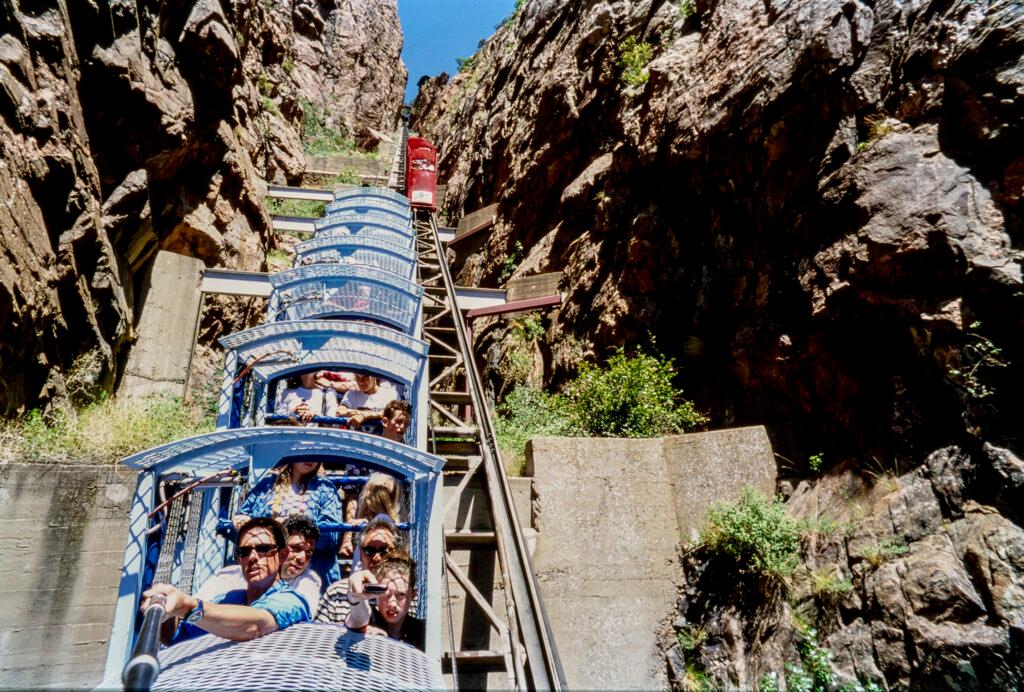
The experience of riding on that car looking straight ahead as it went down, down past the tall vertical granite cliffs all the way down to the river was a thrill. There was a time when people would stand in line for an hour to two hours just to ride down and ride back up the incline and experience the full depth of the Royal Gorge.
The incline after the 2013 fire
It ran continuously from 1930 all the way up to June in 2013. The rails are still there. The cars were salvaged, they were slightly damaged, but the entire building that holds all of the equipment has been removed. And the rails that they would probably be replaced if it ever was to be rebuilt. But the problem is it's so very expensive to rebuild, which is unfortunate because the number one question asked by people who come to the park is when are they going to start up the incline again?
For the really brave: New attractions at Royal Gorge include a zip line, Royal Rush Skycoaster and Via Ferrata
The zip line that goes across the gorge was completed at the same time as the new gondola ride, which replaced the old tram ride. The tower on the south side when you get on it is much higher and your weight just causes it to slide down. So you do nothing but enjoy the ride all the way down. The gondolas, there's two of them that go back and forth and they're able to move a lot more people than the old tram used to move. It's very comfortable. You sit down and there's a clear view all around you.
More screams occur on the Skycoaster than on any other ride in the park. It was completed shortly before the fire and was one of the few attractions that was unscathed because it was all out of metal. The newest thing in the park is what is called Via Ferrata, which means iron way. They hired specialists to come in and put iron rungs and lines into the side of the gorge. So you can literally climb down the gorge and out on a narrow bridge to a lookout point halfway down the gorge over the river, and then climb all the way back up again.
This story is part of KRCC's Peak Curiosity series in collaboration with Colorado Wonders.

